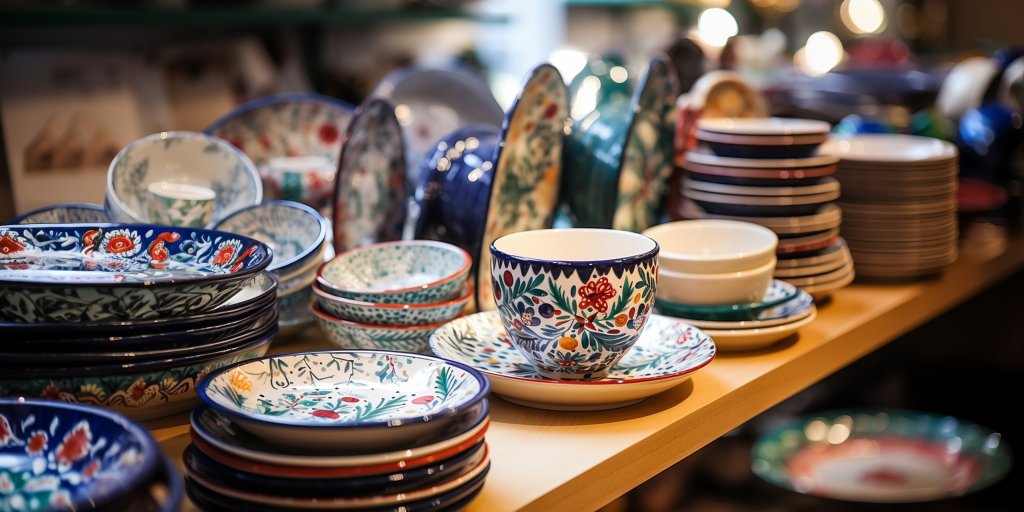The art of table setting is an expression of culture, creativity, and hospitality. Among the myriad choices for serveware, ceramics hold a special place for their versatility, beauty, and timeless appeal. Ceramics, with their earthy undertones and artisanal touch, bring more than just functionality to a dining table; they set the mood, tell a story, and make meals memorable.
Whether hosting a casual brunch or an elegant dinner party, the right ceramic pieces can transform your table into a visual feast, complementing the food and the overall ambiance.
But with the increasing popularity of ceramic serveware, it’s essential to understand how to style these pieces to create an inviting and stylish table setting. From choosing the right colors to mixing or matching patterns, this article will guide you in curating a beautiful table that also reflects your personal style. Continue reading to learn more!
Mix and Match With Confidence
Imagine throwing together various patterns, textures, or shapes on one table setting. Sounds exciting, right? This can be your chance to get your creative juices flowing and test your unique ideas!
So, don’t hesitate to mix different ceramic styles. A combination of rustic, hand-painted plates with sleek, minimalist serving bowls and platters can create an eclectic yet cohesive look. The key is to find a common element, like a color or pattern, that ties the pieces together.
Play With Colors
Ceramics come in a range of colors. Use this to your advantage by selecting hues that complement your tablecloth, napkins, or overall room decor. For a harmonious look, choose serveware in shades that echo the colors of your dining space.
Embrace the Artisanal Feel

Adding an artisanal feel to your table setting is a fantastic way to create a warm, inviting, and unique dining experience. Artisanal elements often bring a sense of craftsmanship and authenticity to the dining space, making each gathering feel special.
One of the charms of ceramic serveware is its artisanal quality. You can use pieces with interesting textures or irregular shapes to add a bespoke feel to your table. Meanwhile, this is also the perfect time to take out your handcrafted ceramic dining pieces. Pick items that show the marks of being handmade, such as unique glazes or visible brush strokes. These imperfections add character and a one-of-a-kind feel.
Aside from your ceramic treasures, you can utilize other table decor with natural, rustic appeal like linens, roughly woven cotton tablecloths, and napkins that can add an earthy, tactile element to your setting.
You can also play with natural elements like wood, stone, or metals to complement your artisanal ceramics. Wooden serving boards, stone coasters, or metal utensils with a hand-forged look, for instance, can enhance the artisanal vibe.
Lastly, add finishing touches made with organic materials such as flowers, branches, or fruits. Arrangements that appear spontaneous and unstructured can add to an artisanal and cozy atmosphere.
Layer Your Table
Are you feeling tempted to use your ceramic collection all in one go? Worry no more because this might be your chance to take out your beloved dining pieces and create visual interest through tablescaping!
Consider placing a smaller, patterned plate on top of a larger, solid-colored one to add depth and dimension to your table setting. You can also play around with all the shapes and sizes of bowls and plates that you have. Go with a design that best complements what you’re serving and the type of dining experience that you want to create.
Consider the Occasion
Tailor your ceramic choices to the occasion. For formal events, opt for more refined, elegant pieces with subtle patterns. Meanwhile, for casual gatherings, feel free to experiment with bold colors and playful designs.
Highlight With Centerpieces
Complement your ceramic serveware with a striking centerpiece. For example, a vase with fresh flowers, a ceramic sculpture, or a candle arrangement can serve as a focal point and tie the table together.
Balance the Table
Distribute colors and patterns evenly across the table to create a balanced look. As much as possible, avoid clustering similar pieces together; instead, spread them out to maintain visual interest throughout the table.
Play With Scale and Proportion
In line with the previous tip, mix different sizes and shapes of serveware. Consider using large platters for main courses and smaller, intricate pieces for appetizers or desserts. This variety in scale adds dynamism and balance to your table setting.
Personalize Your Setting
If you want to make your table setting a little more intimate and unique, you can add a personal touch, such as a family heirloom piece or a ceramic you picked up on your travels. You can incorporate anything unique that makes the dining experience more intimate and special!
Conclusion
Setting the table with ceramic serveware is more than just a functional task; it’s an opportunity to express your personal style and create an inviting atmosphere for your guests. With their versatility, ceramics create a canvas for every meal, transforming each dining experience into a work of art.
So, let your table become a reflection of your creativity and warmth. By following these tips, you can effortlessly blend tradition with modernity, creating a table setting that is both stylish and welcoming.

